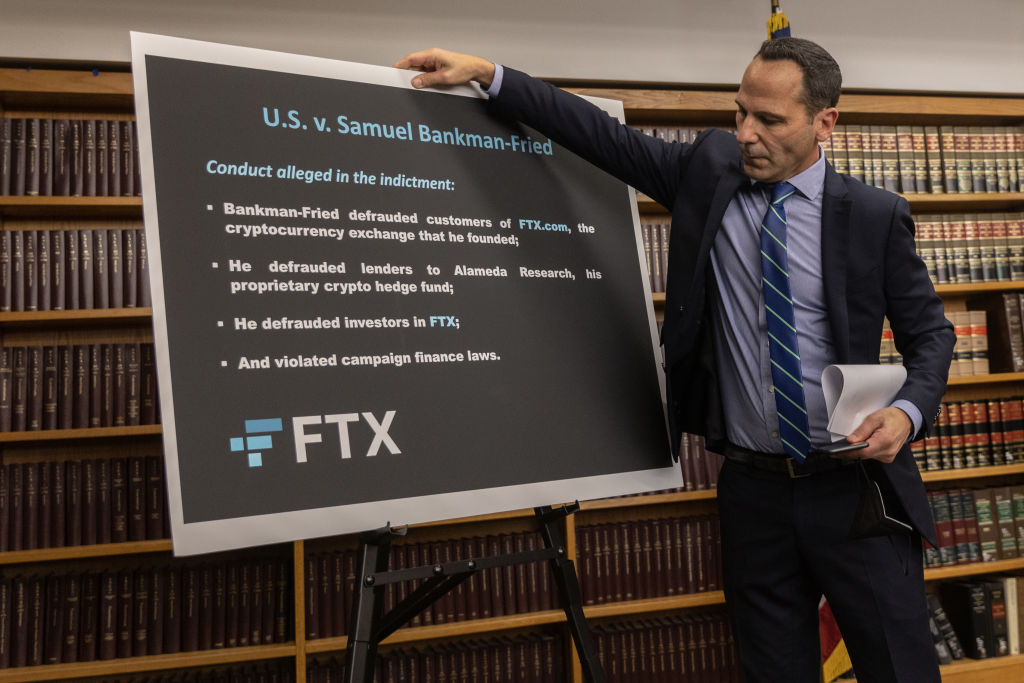2022 started with a free fall in major cryptocurrencies including Bitcoin and Ethereum. At that time, it was seen as just part of the ebb and flow of financial speculations. But it was soon followed by the crash of leading stablecoin TerraUSD.
Stablecoins are supposedly engineered to protect investors from the high volatility of cryptocurrencies. Yet billions of real dollars vanished while also taking down the Luna cryptocurrency.
The spillover effect continued with crypto-lending firms such as Celsius and BlockFi collapsing, crypto hedge fund Three Arrow Capital going bust, and crypto broker Voyager buckling.
Indeed, the tumultuous picture surrounding cryptocurrencies this year has been alarming and sobering. And now, FTX founder Sam Bankman-Fried has been arrested in the Bahamas on a US request.
With entire cryptocurrency players collapsing at such breakneck speed, it is difficult to grasp how this chain reaction took place, leaving a pall over the future of cryptocurrencies. These events have only amplified the debate between crypto proponents and crypto sceptics. But it is also worth considering whether the ongoing debacle points to a major flaw in cryptocurrencies or in its ballooning ecosystem.

All cryptocurrencies are underpinned by blockchain technology, which enables the upkeep of decentralised electronic ledger of coin ownership. Blockchain technology has been scientifically studied, thoroughly tested and validated, including in robotic applications beyond the crypto universe. At their core, blockchains facilitate the maintenance of electronic ledgers without the need for a centralised authority and regulators – the way most national currencies do. This carries implications for international controls, too.
But if there were a flaw with cryptocurrencies, it is not technological but existential: do cryptocurrencies serve a purpose, a market, or any other function as opposed to prevailing centralised monetary systems? This key question is also fiercely debated by experts and crypto proponents, the former arguing that cryptocurrencies are intrinsically speculative assets. Nevertheless, cryptocurrencies, like gold, can be regarded as just another speculative asset in the financial system.
A case can therefore be made that the serious challenges facing the crypto world lie with its ecosystem and not with the cryptocurrencies themselves. As is apparent from the investigations that followed past crypto-dominoes falling, the crypto ecosystem constitutes a closely-knit constellation of actors – lenders, hedge funds, exchanges, wallets, stablecoins being the most prominent ones. Most of these institutional actors of decentralised finance (DeFi) play a role akin to that of their traditional finance (TradFi) counterparts, and they operate in a fully centralised fashion.
The heralded feature of decentralisation, which is supposedly meant to afford cryptocurrencies superiority over classical currencies, is simply bypassed (investment bank Morgan Stanley recently reported that centralisation is a natural evolution of the financialisation of cryptocurrency markets). Another important factor is that most of these crypto actors have very limited interactions with TradFi markets. Indeed, a foot into TradFi means abiding by its regulatory framework, while the crypto world knows few and limited regulations.
Effectively, the DeFi ecosystem forms a complex network of interdependencies, primarily among crypto actors themselves with a few bridges at the margins of TradFi. However, in the absence of systematic regulation, no detailed map of how all these actors are connected to one another is available: we do not actually know how the DeFi network looks like.
Nevertheless, Network Science, a subfield of Complexity Science, can help us understand the broad contours of the cryptocurrency ecosystem and the dominant networks within it. We can draw on the limited knowledge we can derive from post-mortem analysis of the recent major collapses of TerraUSD and FTX for instance. Those revealed an excessively high level of clustering in the crypto ecosystem – a common property in your own social network if your friends are also friends with one another.
Although clustering in social networks can confer numerous benefits, such as greater support when trying to quit smoking, it can also amplify the contagion of negative effects. Hence, if the connectivity of the other DeFi actors still standing is similar to – or overlaps with – that uncovered for the fallen actors, it could be that the crypto ecosystem is likely to continue experiencing a systemic cascading failure.
To be sure, this does not necessarily mean that cryptocurrencies will themselves crash, although it is a probable outcome as investors’ confidence will surely erode at some point, even for the most ardent crypto supporters. It thus remains to be seen how much longer the DeFi ecosystem can continue to defy gravity, but it is unlikely to disobey the laws of complexity.

